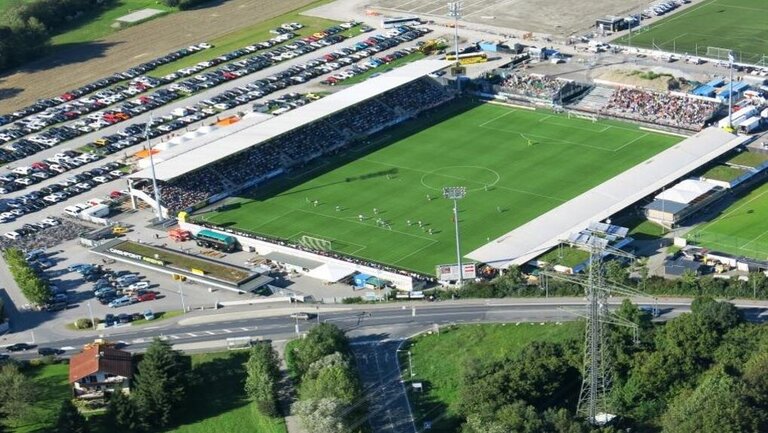Although thousands of spectators fill the stands during soccer matches, the stands can often be empty on non-match days. For this reason, when stadiums of the future are planned nowadays, they are conceived as 365-day-a-year destinations with no seasonal or event-related limitations to their use. SCRA is pursuing exactly this line of thinking with regard to the master planning of its sports complex in the Austrian city of Altach, provisionally referred to as the Vorarlberg Arena. ‘Just as we have to continuously challenge and improve the way we do things, there is also a great deal that we need to improve and enhance across our entire sports complex, including its centerpiece, the CASHPOINT Arena. So, we have been asking ourselves whether and how we can improve the arena’s infrastructure in a way that it can be used for more than just Austrian Bundesliga matches, or what specific enhancements we can introduce to make it attractive for other events,’ says CASHPOINT SCRA President Karlheinz Kopf.
Drawing on their comprehensive knowledge of how to develop innovative, integrated stadium concepts, the SDA experts network is working with the Vorarlberg-based sports club on their plan to create an economically robust sports destination. The Alliance comprises four partners whose combined expertise includes the fields of architecture and theming; merchandising; sponsoring, co-branding; and hospitality and events. They are brand experience consultants Steilpass, international real estate consultants Maxmakers, Drees & Sommer, and Blackforesters. The SDA’s master plan is aimed at generating increasing spectator numbers, creating a better stadium experience, and ensuring the rational use of the Vorarlberg Arena on non-match days. The idea behind the mixed use principle is to generate as much added value as possible for the club.
‘Our goal is to create a successful utilization concept that exploits economic potential over and above that represented by the core use of sports complexes. There is a very clear trend away from mere match-day use toward constant use – including use by third parties.
This also includes the area surrounding sports complexes, facilitating the creation of entire districts,’ explains Frank Bornmann, Associate Partner at Drees & Sommer SE, whose responsibilities include sports sector construction projects. This is why the international network of experts is taking a wide range of potential complementary uses into account when drafting their master plan. Examples include training, conference and event centers, entertainment and attractions, visitor worlds, hotels, restaurants, retail outlets and health-care facilities. They are also looking into other ideas such as eSports and free climbing, as well as using buildings to provide residential accommodation and office space. Drees & Sommer is responsible within the overall master plan for the structural analysis of the location and of local basic factors. These include the plot situation, environmental and usage structures, transportation accessibility, planning-law feasibility, site potential and possible revenue potential, the development and authorization situation, urban planning status, and site development marketability.
